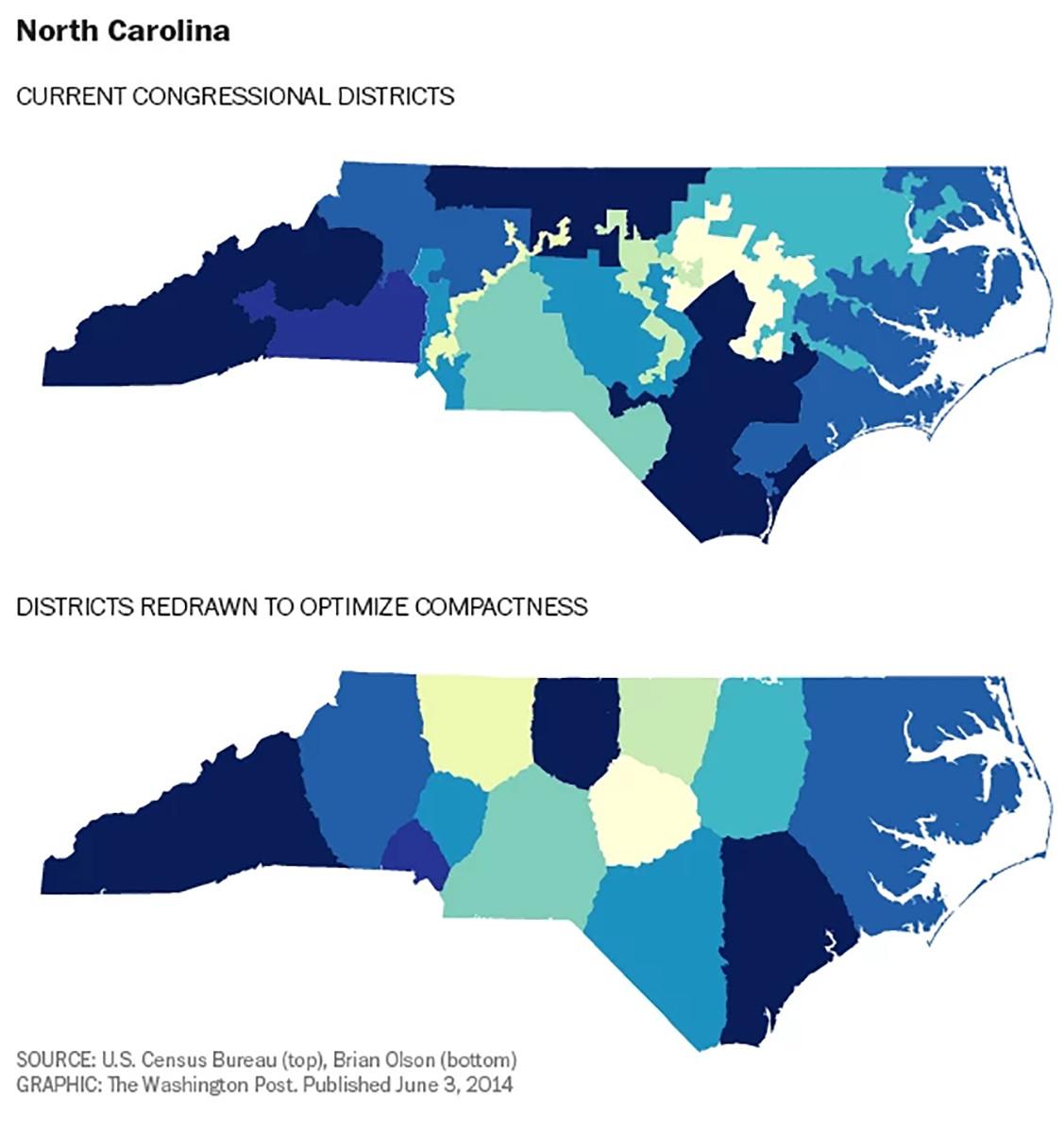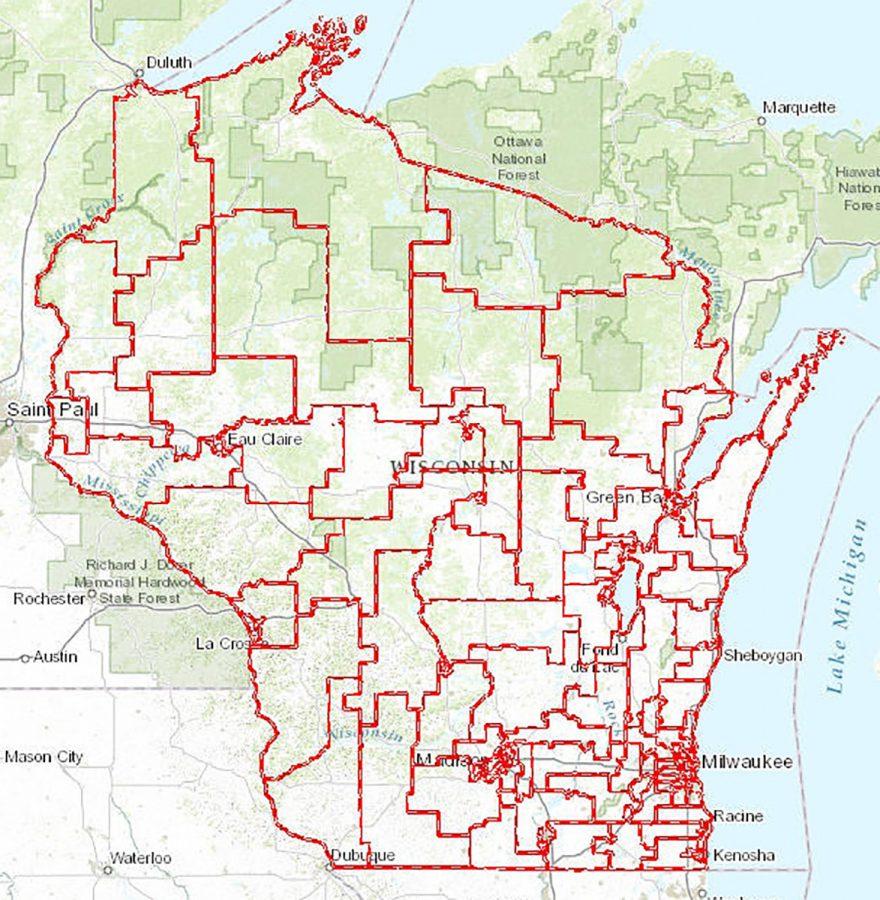Federal judges declare Wisconsin Assembly districts unconstitutional
Gerrymandering still poses a prominent problem in today’s politics
More stories from Deanna Kolell
Photo by submitted
The term “gerrymander” was first used in 1812 in the Boston Gazette. This political cartoon depicts the Senate election district of South Essex as drawn by Governor Elbridge Gerry. The contorted districts were said to resemble a salamander, hence the name “gerrymander.”
Gerrymandering, the act of drawing political boundaries to favor the majority party, is something that has been a part of U.S. tradition throughout history, but recently Wisconsin has become a hotbed for discussing the controversial topic.
Once every decade, the majority party in the state legislature must draw new lines for the Senate and Assembly districts. It’s necessary to reevaluate the districts because they are based on population, which is measured by a national census every ten years.
Wisconsin’s redrawn districts were brought to court in 2015 with the case Whitford v. Gill. The plaintiff argued Wisconsin’s 2011 State Assembly map was unconstitutional because it discriminated against Democrats and strongly favored a Republican-controlled legislature.
In 2016, a panel of three federal judges allowed the case to be brought to trial, the first gerrymandering case allowed to proceed in 30 years. On Nov. 21, the judges ruled 2-1 that the map was unconstitutional.
The panel came to the conclusion the districts “intended to burden the representational rights of Democratic voters … by impeding their ability to translate their votes into legislative seats.” The judges ordered the legislators to enforce a newly drawn map by November, in time for the 2018 midterm elections.
However, Wisconsin Attorney General Brad Schimel has appealed the panel’s decision to the U.S. Supreme Court, stating that since Democrats tend to be heavily concentrated in urban areas, the voting results occur naturally.

Assembly Speaker Robin Vos (R-Rochester) added Republicans won their seats simply because their message resonated better with voters.
“The court has essentially created a brand new test that is significantly flawed and is an encroachment by the court into the legislature’s duties,” Vos said. “The new standards ignores Wisconsin’s political geography where Democrats are naturally clustered in urban centers like Milwaukee and Madison.”
This is a legitimate concern, as voting districts are required to be contiguous and equal in population. Because populations are not distributed equally across a region, the districts get substantially smaller around areas like Madison and Milwaukee.
However, recent voting trends clearly show the effects of gerrymandering. In 2012, Republicans gained 60 percent of the seats in the State Assembly, despite receiving only 49 percent of the statewide vote.
Following the 2016 Assembly elections, there was an evident lack of political competitiveness. In fact, 49.6 percent of the general election races represented only one major party, and 93.1 percent of the incumbents ran unopposed in their party.
A decline in political competitiveness is a result of gerrymandering, which gives voters less options when choosing who they want to represent them. In 2014, 20 million Americans were unable to choose their Congressional representative because they ran unopposed.
If political candidates run in districts where they know the majority of voters will turn their way, they either face no competition or the vote ends in a landslide anyway.
Drawing political districts based on political standing also has national implications. If the panel’s decision to redraw Wisconsin district lines is upheld, more states may follow suit and file lawsuits to revise gerrymandered maps.
On the other hand, if the ruling is struck down, plaintiffs of redistricting cases may no longer be able to argue maps drawn with partisanship in mind are unconstitutional.
Although partisan gerrymandering has obvious effects on voting outcomes, the Supreme Court has yet to declare it unconstitutional because they have failed to identify clear standards when a district plan becomes an unconstitutional partisan gerrymander.
With the evident widespread effects of gerrymandering, it is vital to come up with a solution. One is to let the courts or independent panels create districts instead of lawmakers. Another could be newly developed software, which draws “optimally compact” districts with relatively equal populations.
Just because gerrymandering has been a part of American history since the early 19th century doesn’t mean it should remain any longer. Special interests of politicians should never trump the voice of the people.


